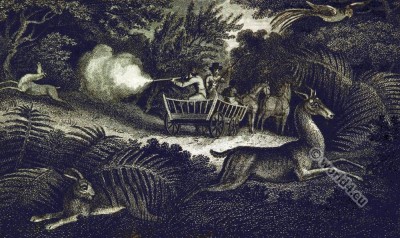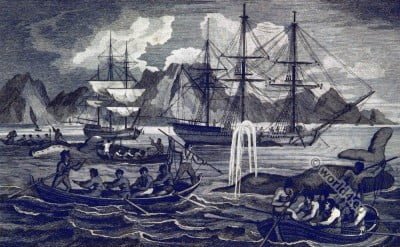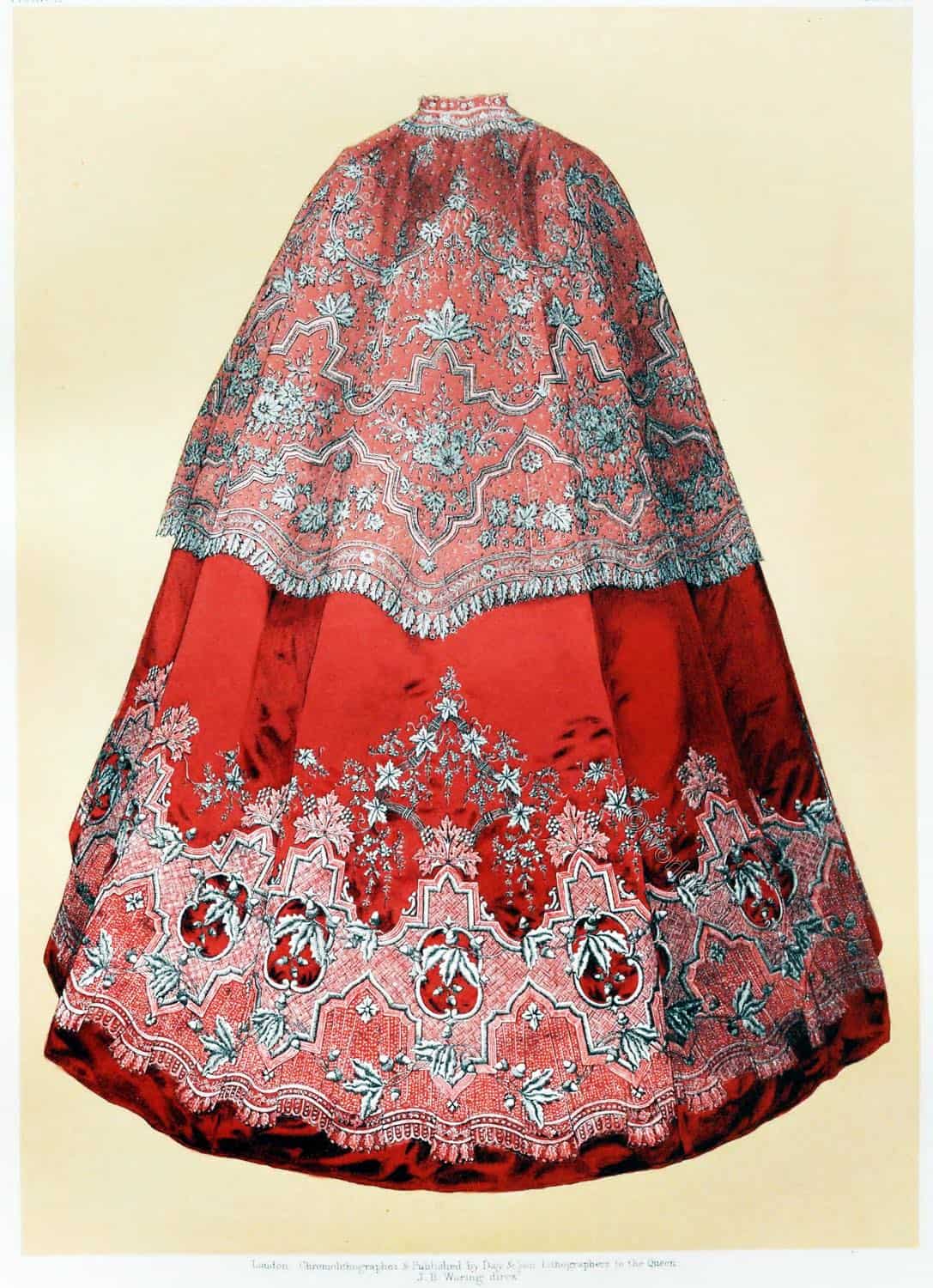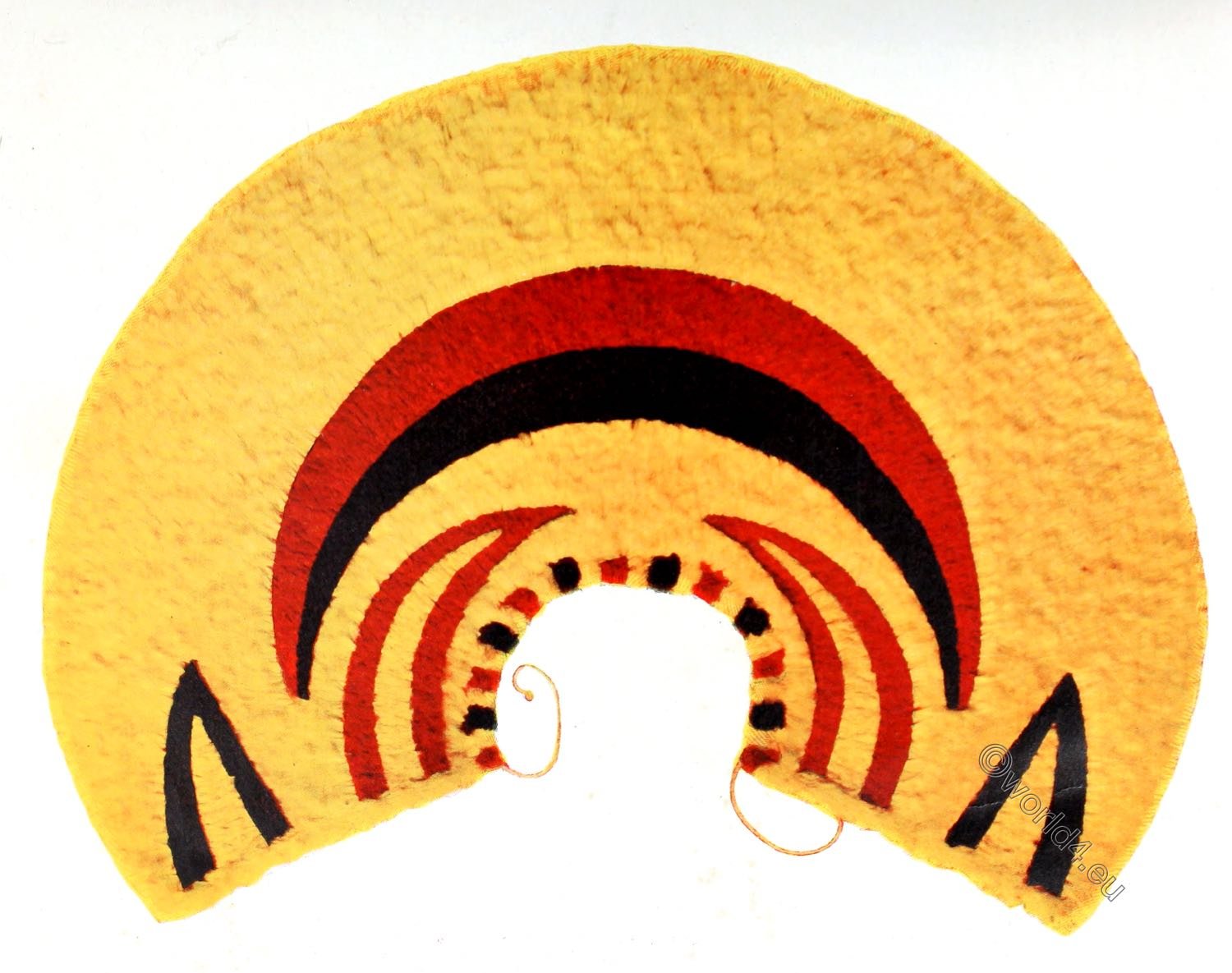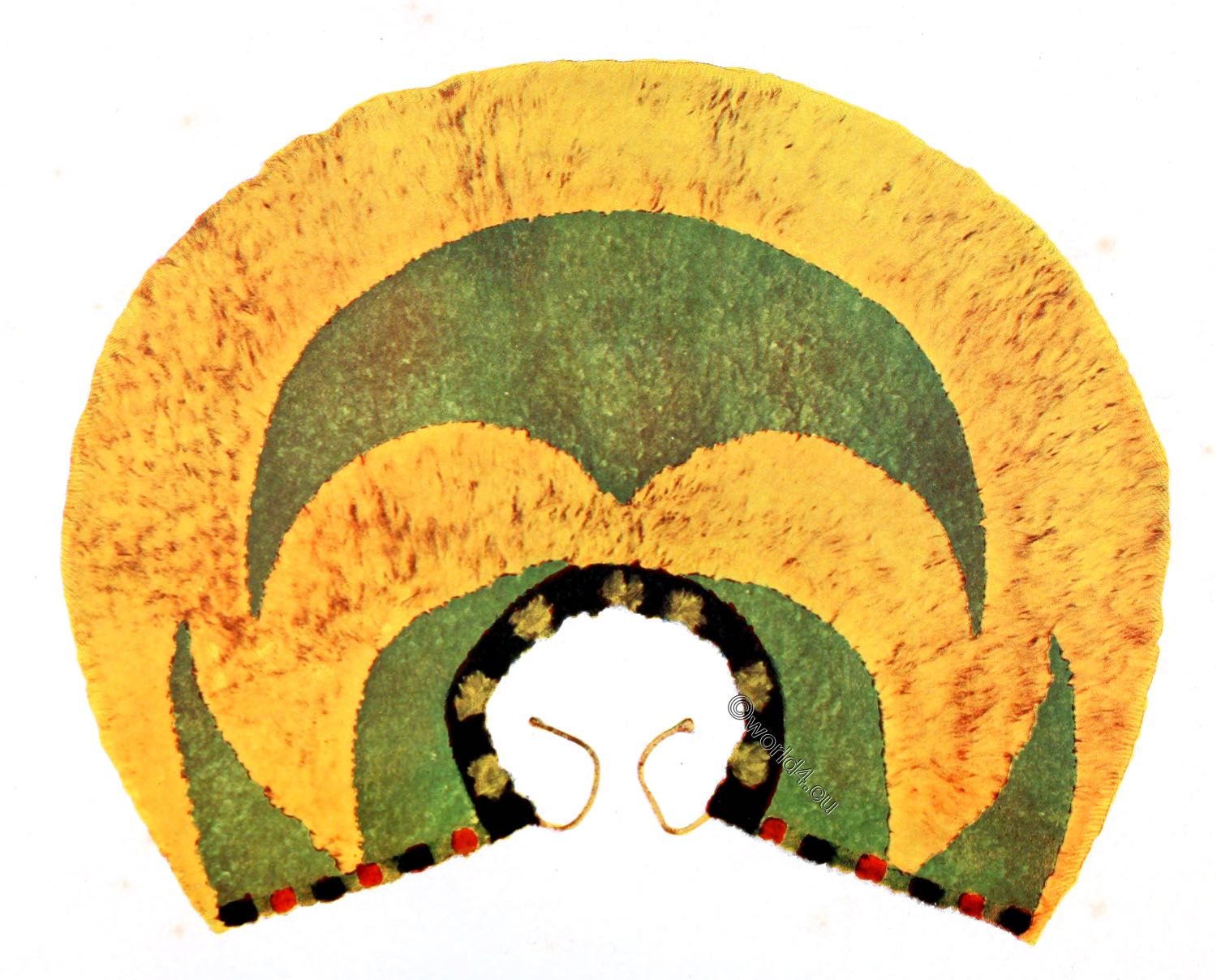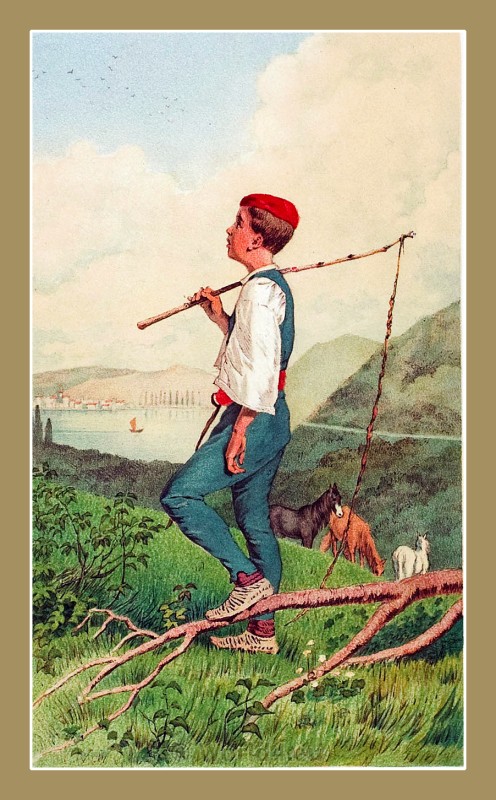Cape of Good Hope.
The beginning of modern historiography in South Africa is set to 6th April 1652, when the Dutchman Jan van Riebeeck on behalf of the Dutch East India Company (Dutch Vereenigde Oostindische Compagnie, VOC) established a supply station at the Cape of Good Hope. The Cape Dutch brought many slaves from Indonesia, Madagascar and India into the country. Beginning of the year 1743 the number of slaves in the province was significantly higher than that of European settlers.
In 1797, British troops occupied the region around the Cape of Good Hope in South Africa. As in 1833, the British Parliament decreed the abolition of slavery in their global sphere of influence, many Buren’s livelihood has been withdrawn. On the trek 1835-1841 wandered around 14,000 Boers in the areas north of the Orange River. They founded the Boer republics, including the Republic of South Africa, also known as the Transvaal and the Orange Free State.
Excerpts from the book.
In this book describes an English officer in the form of letters his impressions on a trip to South Africa. He reflects on the then historical widespread slavery and gives an insight into the contemporary moral ideas of a privileged class. In addition, he describes his journey through the provinces of South Africa, the lives of farmers and citizens in the towns, and describes a landscape and their properties at the beginning of the 19th century.
Notes about slavery.
THE unfortunate class of mankind, who, by Christians, are doomed to perpetual slavery, is in general disregarded by the observers of men and manners, and not considered worthy the attention of the sons of ease and affluence, to whom fortune, or rather Providence, has been more favorable. … The vast theatre of the moral world does not, among all its diversified scenes, exhibit a more disgusting spectacle than the existence of slavery, that odious and detestable system, which gives to one man so undue and unnatural a power over another.
Equality among men is a chimera formed in the imagination of enthusiastic reformers; an ideal thing pleasing in an abstract theory, but incompatible with the plan of Divine Providence in the constitution of the moral system. In their origin, it is true, all men are equal, but in their powers, natural as well as acquired, they are very unequal, and Nature has varied their talents as much as fortune, or rather Providence has diversified their condition. Some men are as evidently born to govern, as others to obey. Due subordination must, therefore, be maintained between the governors and the governed, otherwise the bonds of civil society will be relaxed, and no numerous community can long subsist in tranquillity. This is the chain which links together all civilized society, and is the foundation and support of all rational liberty. Slavery, on the contrary, that odious and abominable system, which renders one man the property of another, is the degradation of humanity, and a direct violation of the laws of Nature.
To bring forward to distinct inspection, the circumstances of that system, as it has existed among the ancients and moderns; to trace its history; to examine the principles on which it has been founded and carried on; to develop its causes, and display its effects; to endeavor to demonstrate the expediency and practicability of its abolition, is my peculiar aim at present. In the course of the investigation, a comparison will be made between a state of slavery, as it existed among the ancients, and the modern system of negro slavery.
Slavery has existed in one part of the world or another, in every age since the time when men first began to be collected in numbers, and regular communities were formed. It is well known that it existed among the Egyptians, the Babylonians, the Jews, the Greeks, and the Romans, and there is little room to doubt of its prevalence among all other nations of antiquity.
The circumstances from which it originated, and the principles on which it was founded, were different. Sometimes slavery was the punishment of crimes, as it is now, in some instances, among most nations; but with this difference, that in the modern nations (of Europe at least,) delinquents condemned to slavery are employed in the service of the state, and commonly for a limited time; whereas, among the ancients, they were generally sold to individuals either natives or foreigners. This kind of slavery has been sanctioned by most legislators, and, in its principle, does not appear unjust; at least, in civilized nations, where criminals have the privilege of a legal trial; and such a mode of punishment, properly regulated, may have a salutary influence on the morals of those who have rendered themselves obnoxious to it, and prove ultimately beneficial to the state.
Visits from the hyena at night.
IT is from the east side of the Table Mountain that I again address my friend. Here we enjoy the cool, refreshing breeze wafted from the southern ocean. At night the hyena pays us a visit, and prowls around our camp. He gives notice of his approach by his hoarse and plaintive howling. When the dogs find their enemy is at hand, they set up an hideous howling, expressive of their terror, and this mingled concert of discordant sounds banishes all sleep from the eye-lids. When the hyena boldly advances, the barking of the dogs suddenly ceases, and they remain in silent terror at his approach. The farmers in our neighborhood lay a snare for taking them alive, which is a simple contrivance. A building of about six feet square, and as many feet in height, open at top, with a sliding door, is all that seems necessary for the purpose. The bait that attracts them is placed within, and fixed in such a manner, that on their attempting to devour it, the door falls down instantaneously, and thus they become prisoners.
I have seen one caught in this manner; it was the spotted wolf which I believe to be the common hyena of the Cape. Our farmer called it the Cape Bear; indeed, the name seems sufficiently appropriate, for they bear no small resemblance to that animal in their form.
He mentioned at the same time, that the hyena possesses uncommon strength in its head, and that the most violent and repeated blows on that part could hardly deprive it of life. I have seen it attacked by an English bull-dog with the most savage ferocity, but its hard, tough skin was impenetrable to the teeth of his opponent. The hyenas take up their abode amidst the rugged cliffs of the Table Mountain, and along that chain of mountains running in a southerly direction, till they terminate in what we may with propriety call Cape Point. At times they are met with by the traveller at night, on the road leading from Wynberg to Cape Town, but are never sufficiently daring to venture an attack. It is no uncommon thing to hear of their falling upon strayed oxen and horses, and when left alone in any sequestered spot, there remains little chance of their escaping.
The Steen-bok and Grys-bok spring from the thickets on every side. Jackalls and hares are also numerous, and this country is peculiarly favorable to the pursuits of the sportsman. When a colonist goes on a shooting party, he travels in a light cart made for the purpose, and he can thus carry along with him every conveniency suited to the journey. Seated in his wagon, with his gun by his side, he is driven along with rapidity. When the game is started, he stops his vehicle, and can then with, coolness take his aim. Many of the farmers, when they have a mind to partake of this amusement, prefer oxen to horses, as the slow, deliberate pace of the former is, in their opinion, better calculated for ensuring sport, than the quick ambling step of the latter.
Introduction to a Xhosa chief
I HAVE been highly gratified by having been introduced to the presence of a Caffre chief *, who had accompanied a Dutch gentleman from Caffraria, in order to pay his respects to His Excellency the Governor of the Cape. He entered the room with a dignified step, and seemed neither startled nor abashed on being brought before a crowded company. Wine and fruit were presented him, which he accepted with apparent satisfaction; his eyes glistened with delight on viewing the table and the guests. All evinced a pleasing emulation in paying court to this swarthy son of Africa, by every mark of attention which might convey favorable impressions of the British character. On returning to his country and government, he could not fail to make known the hospitable reception, and kind treatment which he met with at the Cape.
It was no bad policy for the government to make friends of such a brave and enterprising race of men, and may eventually be attended with the happiest consequences.
The dress of the Xhosa chief was of that kind, that seemed ill-calculated for the parade of the drawing-room. It brought to recollection the primeval state of man, when his wants were few, and easily satisfied. His head-dress consisted of a plume of ostrich feathers, fastened by a brass fillet; his body wrapped round with the skin of a tiger, with the rough side turned inwards. A brass girdle encircled the lower part of it.
He wore three large ivory bracelets on his left arm, which latter is, among the Caffres *), an honorable mark of distinction, being the badge of merit, or reward of prowess. The killing of a lion, or an elephant,is sometimes honored with an additional ring of ivory. It fits closely to the arm, and has received a very neat polish from their hands.
*) Caffres is from the Arabic word kaafir (“infidel”) derived name, the first two Muslims non-Muslim peoples filed with, namely the Nuristani (Kafirs) in Central Asia and the Xhosa in Southern Africa. The European colonialists and immigrants used him at first only for the South African people of the Xhosa. He was later applied to other Bantu peoples. In the times of colonialism and of apartheid on the other hand, he was used as a swearword. The use of the word is now banned in South Africa and Namibia as hate speech (hate words). In Sri Lanka, however, the derived term Kaffir is not discriminatory meaning. There he called a descendant of African slaves of the Portuguese ethnic group. Their popular dance music style Kaffirinna is formed in the 1970s version of the African-Portuguese Baila.
Manner of threshing their corn.
The manner in which they perform the operation of threshing out their corn, may at first sight be condemned, but when we see how effectually it is completed, and the little that is lost in the process, we shall be apt to suspend so hasty a decision. The corn-ricks are generally built close by these circular floors, which are surrounded by a fence of clay, perfectly hard, of about three feet in height. When the floor is swept clean, the sheafs are placed upon it, sometimes to the number of a thousand; then all the young horses of the farm are driven round this amphitheater for a number of hours, till the whole is completely broken under their feet.
A person stands with a long whip in the middle of the circle, to regulate their course, to quicken or moderate their pace as he finds it necessary, while a few more hands are employed in turning over the sheafs with forked sticks, so that the whole may have the benefit of an equal pressure. They separate the grain from the chaff by throwing it against the wind, which they continue to do till the lighter part is thus carried away by the force of the breeze. Perhaps a great deal of time and labor might be saved by using fanners, and the grain be more free from sand, of which the Cape flour has always a tolerable portion.
To shake off long established customs and habits in the manners or arts of life, is in all countries a business of time. We are slow to adopt improvements, though convinced of the necessity of so doing. The serene, parching atmosphere of the Cape during the harvest months, hardens the grain to such a degree, that it does not require the operation of kiln-drying to fit it for the mill.
In the months of January and February, when they are most busily employed in threshing out their corn, and conveying it to market, they have no rains to dread;— the violence of the south-east winds may a little incommode them in their labors, but no where is this wind so tempestuous and disagreeable as in town. As the harvest approaches, and the crops invite the sickle, the weather becomes more dry and serene;- with you, my friend,it is quite the reverse, the moisture of the atmosphere increases with the yellow tinge of the fields; and the rains of August but too often overwhelm the husbandman in ruin.
Want of rain is here the most general complaint; if the winter months sufficiently soak the ground, so as to fit it for the reception of the seed, and a few successive showers bring forward the crop, the husbandman need be under no apprehension of the want of a sine season to gather in the fruits of his labor. I find peculiar satisfaction in gleaning amid the rural walks of Southern Africa; but I confess I feel at present a diminution of my pleasure, when I reflect— when I see, that the colored group now before me are slaves.
The Governors villa
In the evening we arrived at Greene Kloof. Here is a pleasing variety of hill and dale, and it is much resorted to by the sportsmen of the Cape. This is one of those government farms, which, during the Dutch administration, the governor of the colony always took care to turn to his own emolument and advantage. A tolerably good house had been built here, but it is rapidly falling into decay: every thing around bears strong impression of the ravages of time, and neglect.
The Dutch governor and his family were wont to retire thither at certain seasons, and to employ it as a shooting lodge.— Wolves, in great numbers, infest this neighborhood, and are so bold and daring at times, as to attack their cattle in the kraal, though close by the house. The night before, a young foal had been mangled and torn by one of these destructive animals, in a most shocking manner. The mother of the foal made a noble stand in its defence, but had suffered so much in the conflict, that she died two days after.
The whale fishery.
In the winter months Table Bay is frequented by whales, and they sometimes approach very near to the shore. The fishery is rather on the decline; but is still carried on with considerable success. The average fishing of a season is about sixteen whales, and a few of them measure seventy feet in length.
There is a house erected near the shore for cutting up and manufacturing the blubber. Eighteen leagers of oil, of about one hundred and fifty-four gallons each, is what is commonly produced from a good whale. A leager of oil generally fetches eighty Rixdollars (English term for silver coinage used throughout the European continent).
Cast anchor in Simon’s Bay.
Simonstown near Cape Town, South Africa.
On the morning of the 9th we anchored in Simon’s Bay, which was crowded with ships from all quarters of the globe. The winter season having set in, it was no longer safe for ships to remain in Table Bay.
The village of Simonstown, running along the beach, almost at the foot of the overhanging mountains, presented a gay and picturesque appearance, rendered still more striking when contrasted with the dreary prospect of the surrounding country. When a new page in the volume of nature is, as it were, laid open before us, impelled by a spirit of novelty, we are hurried from the contemplation of one object to that of another, with hardly a moment left for reflection; prompted by a laudable curiosity, we wander over the diversified scene with emotions of pleasure, at one time pleasingly employed in observing the different appearances in the newly discovered land, and at another time the customs, habits, and manners of those among whom we are going to reside.
Bullock wagons
A farmer of the name of Pringtloo, is said to possess 18,000 sheep in the distant district of Bruntjes Hoogte (Bruintjieshoogte, Eastern Cape province of South Africa). A muid of grain weighs about one hundred and ninety pounds. On leaving Greene Kloof, we visited the Roe hill, Botter hill, and Tiger hill, small districts in an elevated exposure, and very fertile in corn. From their vicinity to Cape Market, encouragement is held out to them for the enlarging their possessions, and encreasing their crops. Their heavy bullock-wagons are almost daily employed at this season, in transporting to the Cape, corn and chaff for the government stores.
The corn-farmers in this part of the country, are obliged to send their cattle to graze on the other side of the mountain, after the labour of their farm is completed, to recruit the strength of their oxen, and put them into good plight. The trifling sum of a few shillings a month, is all that is exacted from them by the grazier, and two or three months at most are sufficient to make them fat.
Source: Gleanings in Africa; exhibiting a faithful and correct view of the manners and customs of the inhabitants of the Cape of Good Hope and surrounding countries. Interspersed with observations and reflections on the state of slavery in the southern extremity of the African continent. In a series of letters from an English officer during the period in which that Colony was under the protection of The British Government. Albion Press printed. Published by James Cundee, Ivy – Lane; Paternoster- Row, London 1804.
Related:
- The dark continent. Africa, the landscape and the people 1931.
- Matabele Land and the Victoria Falls.
Related
Discover more from World4 Costume Culture History
Subscribe to get the latest posts sent to your email.



